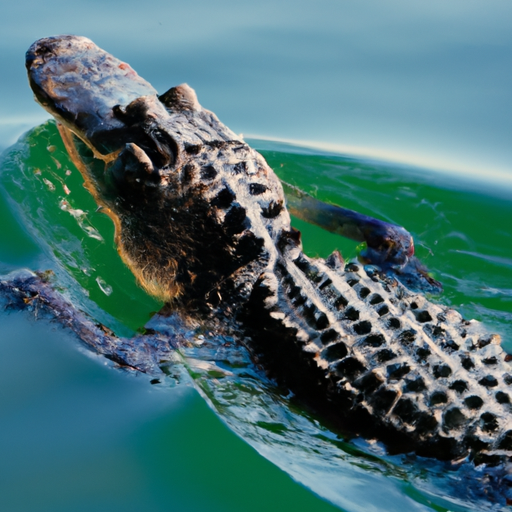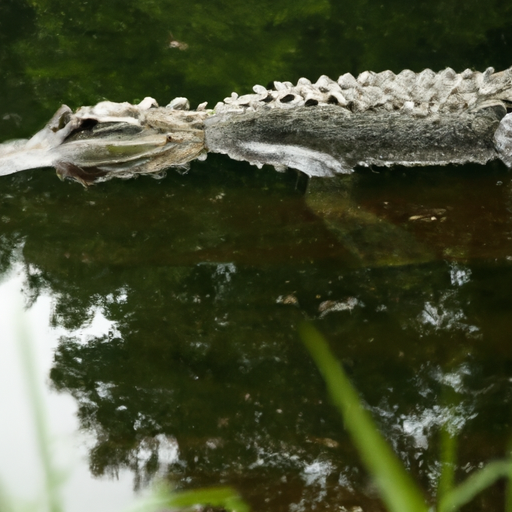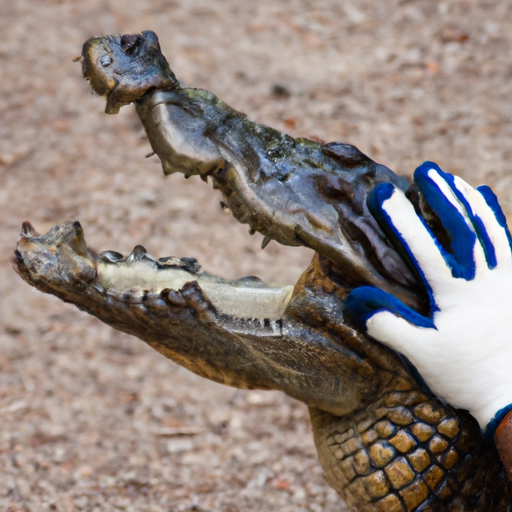So you’re curious about how fast alligators can swim? Well, hold onto your hats because we’re about to dive into the thrilling world of these incredible creatures.
In this article, we’ll explore the top speeds at which alligators can propel themselves through the water, giving you a newfound respect for their athletic abilities.
Get ready to be amazed as we uncover the secrets of just how fast these alligators can go!

How Fast Does an Alligator Swim
Alligators are fascinating creatures that are known for their incredible swimming abilities. In this article, we will explore the basic information about alligators, their swimming abilities, and the factors that affect their speed in the water. So, let’s dive in and discover how fast an alligator can swim!
Basic Information about Alligators
Alligators belong to the crocodilian family and are reptiles that are primarily found in freshwater habitats. They are cold-blooded animals and have a unique body structure that allows them to thrive both on land and in water.
Alligator Species
There are two main species of alligators: the American Alligator (Alligator mississippiensis) and the Chinese Alligator (Alligator sinensis). While both species share similar characteristics, they differ in terms of size and habitat.
Physical Characteristics
Alligators have a large and robust body covered in rough, armored skin. They have a distinctive snout with a rounded shape that helps them distinguish them from their crocodile relatives. These reptiles also possess powerful jaws filled with sharp teeth, which are beneficial for catching prey.
Habitat of Alligators
Alligators primarily inhabit freshwater environments, including swamps, marshes, lakes, rivers, and wetlands.
They thrive in warm regions such as the southeastern United States, China, and parts of Mexico. These habitats provide an abundant supply of food and shelter for alligators to survive and reproduce.
Swimming Abilities of Alligators
Alligators are efficient swimmers and can navigate through the water with grace and agility. Their unique adaptations and physical characteristics play a significant role in their swimming abilities.
Efficient Swimmers
Alligators are well adapted to an aquatic lifestyle. They have a streamlined body shape, webbed feet, and a powerful tail that enables them to move swiftly through the water. Their buoyancy control mechanism allows them to stay afloat effortlessly, making swimming an effortless task for these reptiles.
Adaptations for Swimming
Alligators have various adaptations that aid them in swimming. Their streamlined body shape minimizes resistance in the water, allowing them to glide smoothly. Moreover, their powerful tail muscles provide the primary source of propulsion, propelling them forward. Additionally, their webbed feet assist in steering and maintaining balance while swimming.
Speed and Maneuverability
When it comes to speed, alligators are no slouches. They can achieve impressive swimming speeds, especially during short bursts when hunting or evading predators. Although their maximum speed may vary depending on the circumstances, alligators can reach speeds of up to 20 miles per hour (32 kilometers per hour). However, their average cruising speed is usually around 2-6 miles per hour (3-9 kilometers per hour). When it comes to maneuverability, alligators can make quick turns and change direction rapidly, thanks to their muscular bodies and powerful tails.
Factors Affecting Alligator Swimming Speed
Several factors can impact an alligator’s swimming speed. These variables can influence their ability to move swiftly and adapt to different aquatic environments.
Size
The size of an alligator can affect its swimming speed. Larger alligators tend to be more robust and have stronger muscles, enabling them to swim faster. Conversely, smaller alligators may not be able to generate the same level of propulsion as their larger counterparts, resulting in slightly slower swimming speeds.
Temperature
Alligators are ectothermic animals, meaning their body temperature is regulated by the external environment. Warmer temperatures increase their metabolic rate and consequently their swimming speed. In contrast, cooler temperatures can slow down their movements, making them less agile in the water.
Water Conditions
The conditions of the water also play a role in how fast alligators can swim. Calm, still waters provide optimal conditions for maximum speed, as there is minimal resistance. In contrast, choppy or turbulent waters can hinder their forward propulsion and impede their overall swimming abilities.
Health and Fitness
The health and fitness of an alligator can affect its swimming speed. A healthy alligator with strong muscles and a vigorous cardiovascular system will have the stamina and strength to swim faster. Conversely, an alligator that is injured, sick, or malnourished may not be able to swim as quickly or efficiently.
Final Thoughts
In conclusion, alligators are impressive swimmers that have evolved to thrive in aquatic environments.
Their streamlined bodies, powerful tail muscles, and webbed feet allow them to achieve impressive swimming speeds and maneuverability in the water.
While their maximum speed can reach up to 20 miles per hour, their average cruising speed is typically between 2-6 miles per hour.
However, it is essential to remember that various factors, such as size, temperature, water conditions, and overall health, can influence an alligator’s swimming speed.
So next time you encounter an alligator in the water, you can appreciate the remarkable abilities that allow them to navigate their aquatic homes with such grace and efficiency.




